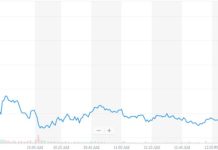[ad_1]
Billionaire Jeff Bezos bragged that Amazon pays its employees a minimum wage of $15 per hour and challenged its competitors to follow suit. Ironically, though, the e-commerce giant just acquired a robotics startup whose machines could one day send many of those employees to the unemployment line.
Robots Are Taking Over Amazon Warehouse Jobs
Amazon’s purchase of Canvas Technology for an undisclosed sum will allow it to reduce the manpower required at its fulfillment centers. TechCrunch reports that Canvas builds self-driving carts for moving goods around a warehouse, so you might find yourself out of a job in a few years if you’re driving one of those.
Canvas’ autonomous cart uses 3D imaging and proprietary software to navigate around objects and humans in a warehouse setting. The technology can be bolted on to existing hardware. This means that it could be quickly deployed into existing carts running around Amazon’s warehouses, moving the company closer toward replacing more humans with robots.
Amazon has already put its 2012 acquisition of Kiva Systems to use at 25 of its fulfillment centers. That $775 million purchase birthed Amazon Robotics, and the company’s latest purchase will play well with Kiva’s machinery.
Already, around 100,000 robots have infiltrated the company’s fulfillment centers. These robots transport inventory shelves to human workers, who then pick up and sort customer orders from those shelves.
So Amazon’s tall claims of increasing the minimum hourly wage to $15 and challenging others to do the same are hollow at best as the company actively works to replace as many of those workers as possible.
Sure, the company claims that humans and robots will co-exist in its warehouses to enhance safety and create a better working environment. But the reality that humans will be replaced over time should not be ignored.
Jeff Bezos’ Wage Boast Leaves Out a Few Key Details
Jeff Bezos gloats that Amazon raised its minimum wage to $15/hr, but his boast leaves out a few key details. | Source: SAUL LOEB / AFP
Jeff Bezos claims that the $15/hr minimum wage has benefited over 250,000 Amazon employees and more than 100,000 seasonal workers. But the reality on the ground is more complex, as the company reportedly slashed hours to keep costs in check.
Employees at Amazon-owned Whole Foods reportedly experienced a reduction in the number of hours worked once the $15 minimum wage was put into place. The Guardian interviewed Whole Foods employees in March and found that part-time workers had their average weekly hours slashed to 21 from 30 – a decline of 30%. Full-time employees saw their average schedules slashed from 37.5 hours to 34.5 hours.
Sadly, this isn’t the only way Amazon is throttling its wage bill at the expense of its workers.
Amazon eliminated monthly bonuses and stock awards for warehouse workers after the $15/hour minimum wage came into effect. The company claims that the hourly pay hike will be enough to compensate for the loss of incentives, but reduced working hours tell a different story.
Bezos wrote in his annual shareholder letter:
“Today I challenge our top retail competitors (you know who you are!) to match our employee benefits and our $15 minimum wage. Do it! Better yet, go to $16 and throw the gauntlet back at us. It’s a kind of competition that will benefit everyone.”
But it doesn’t seem like much of a leap to argue that Amazon employees are getting a raw deal. No incentives and stock awards, reduced hours, and the potential of losing your job to a robot in the future clearly highlight the irony – if not subtle hypocrisy – in Bezos’ minimum wage boast.
[ad_2]
Source link




